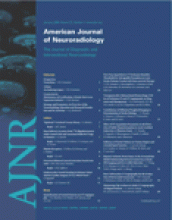Roger A. Barker, Neil Scolding, Dominic Rowe, and Andrew J. Larner. 936 pages, $75.00. Cambridge University Press; 2004.
In a lightweight, small (5 inch × 3.5 inch) paperback, Drs. Barker, Scolding, Rowe, and Larner have strung together in alphabetical order virtually every named neurologic disease and syndrome one could image. At 936 pages in length and with an average of approximately 4 named diseases per page, there are probably approximately 3700 entities in the book. The included material runs the gamut from the common syndromes/diseases to the occult and widely unknown entities (at least to this reviewer): try “Luft disease,” “Harding disease,” or “jumping Frenchman of Maine” on for size. Thumbing through the book, on nearly every page one can’t help but stare at some disease or syndrome and ask, “What the heck is that?” Some of this, while seemingly weird, is interesting. For instance under “Mantakassa” the authors write, “see Konzo,” as if the reader would know what “Konzo” is. But flipping to “Konzo” reveals that this refers to a symmetric spastic parapareis resulting from the consumption of insufficiently processed roots of a food staple (cassava) in central Africa. Or how about the “happy puppet syndrome”? The book refers the reader to “Angelman syndrome” (still a mystery), where the reader quickly learns that this genetic disorder (chromosome 15) presents in children who have lower extremity hypertonia and a jerky ataxic gait, (voilá, the happy puppet). How many syndromes did you think there were with “Déjerine” in the title? Just one I bet—“Déjerine-Sottas syndrome.” But how about the others: Déjerine-Klumpke plasy or Déjerine-Mouzon syndrome or Déjerine-Roussy syndrome or Déjerine anterior bulbar syndrome? Is this really important? No, but certainly interesting.
Also, diseases or syndromes with which neuroradiologists are familiar often have auxiliary names. This can be used effectively to confuse or stump your colleagues. For instance if you see a classic Sturge-Weber syndrome, you now could call it Krabbe-Weber-Dimitri disease, or the next time you identify disease near the cavernous sinus at the orbital apex or at the superior orbital fissure in a patient with exophthalmos and CN 3, 4, 5, 6 dysfunction, you may suggest a Foxx-Jefferson syndrome and then run for cover. With this handy book the possibilities are endless.
But do not think for a moment that this book is merely a compilation of weird diseases. It is bursting with easily digested facts. Stumped by the channelopathies? Consult this guide for a quick rundown. Have you forgotten the categories of the dementias (and you are worried personally)? Look up all the causes and then worry some more. Similarly, you can easily access information on paraneoplastic processes with all the anti-Hu, anti-Yo, anti-Ri, anti-CAR antibodies. With a furtive glance at this book, kept neatly in your lab coat, no longer will the neurologists pull this stuff out of the hat and receive nothing in return from you but a blank stare. I tried hard to find an anticardiologist antibody, but this was one thing absent in the guide. When I forgot the name of the unilateral form of spinal muscular atrophy (SMA), I went quickly to SMA in the book and found just what I was looking for: Hirayama disease (monomelic amyotrophy). Could I have done this with Google? Yes. Would it have been a more laborious task? Yes. Could I have done it in the faculty lounge drinking a cup of coffee? No.
Here is how the book is set up: For most disease entities such as Parkinson disease or the Lennox-Gastaut syndrome (you mean you don’t know what this is?) there are sections entitled pathophysiology, clinical features, investigations and diagnosis, differential diagnosis, treatment and prognosis, and references. For less-prominent disease such as the Lemieux-Neemeh syndrome (you are going to have to buy the book to find out), there are a couple of sentences with a suggestion that the reader consult other relevant entities.
When I first received this guide, I thought that after I reviewed it I would quickly place it at the bottom of a pile of books or at the very end of a book shelf. I was wrong. In anticipation of writing a review of the book, I decided to place it on my desk or carry it with me to see how often I used it when reviewing manuscripts, reading the literature, going over cases in a conference, or reviewing films. Surprise! It is very useful. So it will continue to occupy a corner on my desk. No longer will I have to turn to my PC to Google something because now it is easier to turn to a page or 2 and to find what I am looking for. With this in mind, I decided to develop hand-to-hand combat between this small book and Google, in an admittedly very unscientific manner. First, my favorite, Marchiafava Bignami. Google wins with a much more comprehensive detailing of the disease. Second, paraneoplastic syndrome. The book wins with very easily assessed and complete information on the neurologic consequences of this syndrome. Third, PORN syndrome (progressive outer retinal necrosis). Well, you can imagine what Google turned up, so, the book wins this one easily. The book is the clear winner 66% of the time.
I wondered how the authors assembled all these disease names and syndromes and I thought that in some very small way it was similar to James Murray’s first compilation of the Oxford English Dictionary except here instead of little slips of paper they kept tabs of everything electronically, a feat of good measure nonetheless. It is fitting that this meticulous catalog has been achieved by authors, 3 of whom are from the United Kingdom (Cambridge, Bristol, and Liverpool).
This book is good, and I bet the authors never thought a reviewer would call this semidictionary fun, but it is. Buy this guide and extract critical information quickly, stump your colleagues, thwart the neurologists, and kill everyone with minutiae.
- Copyright © American Society of Neuroradiology













